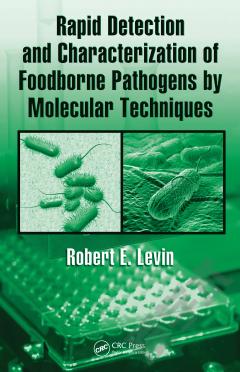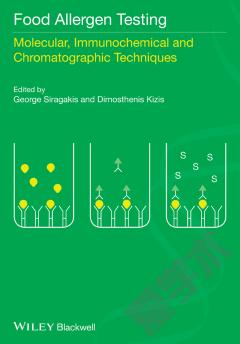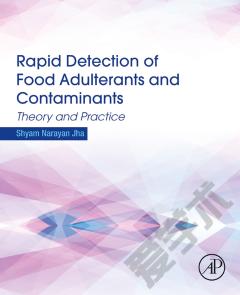Rapid Detection and Characterization of Foodborne Pathogens by Molecular Techniques
Molecular Techniques for Detecting, Quantifying, and Subspecies Typing of Foodborne Pathogenic Bacteria The Polymerase Chain Reaction (PCR) Real-Time PCR (Rti-PCR) Nested PCR Loop-Mediated Isothermal Amplification (LAMP) Assay Pulsed-Field Gel Electrophoresis (PFGE) Random Amplification of Polymorphic DNA (RAPD) Multilocus Sequence Typing (MLST) Resriction Fragment Length Polymorphism (RFLP) and PCR-RFLP Amplified Fragment Length Polymorphism (AFLP) Escherichia coli O157:H7 Characteristics of the Organism Virulence Factors Phenotypic Variation of E. coli O157:H7 PCR Assays Involving Molecular Probes and Real-Time PCR (Rti-PCR) Loop-Mediated Isothermal Amplification (LAMP) of DNA Immunomagnetic Separation and PCR Restriction Fragment Length Polymorphism Subspecies Typing of E. coli O157:H7 Isolates Shigella Characteristics of the Genus Virulence Factors PCR Detection of Shigellae Salmonella Characteristics of the Genus Molecular Techniques Vibrio vulnificus Characteristics of the Organism Virulence Factors Enrichment and Isolation Media Identification of V. vulnificus Isolates Typing of V. vulnificus Isolates below the Species Level Molecular Methods for Detection and Typing Vibrio parahaemolyticus Characteristics of the Organism Clinical Symptoms Due to Infections by V. parahaemolyticus Ecology of V. parahaemolyticus Phenotypic Characteristics of V. parahaemolyticus Sensitivity of V. parahaemolyticus to Low Temperatures Isolation and Cultivation of V. parahaemolticus Preservation of V. parahaemolyticus Isolates Bacteriophage for V. parahaemolyticus Use of the Polymerase Chain Reaction (PCR) for Detection of V. parahaemolyticus Molecular Typing of V. parahaemolyticus Isolates below the Species Level The O3:K6 pandemic clone Vibrio cholera Characteristics of the Organism Factors Associated with the Virulence of V. cholerae PCR Detection, Identification, and Characterization of V. cholerae Molecular Typing of V. cholerae Isolates Acquisition of Antibiotic Resistance Biotype Conversion by Phage Aeromonas hydrophila Characteristics of the Organism PCR Detection Distribution of Toxin Genes Genotyping Using Hemolysin and Aerolysin Genes Restriction Fragment Length Polymorphism (RFLP) Plesiomonas shigelloides Characteristics of the Organism Nomenclature and Taxonomy Physiological and Biochemical Characteristics Ecological Distribution Toxins and Invasive Factors ss-Hemolysis Isolation Serology Epidemiology and Outbreaks Application of the Polymerase Chain Reaction (PCR) Campylobacter jejuni Characteristics of the Organism Ecological Distribution of Campylobacters Virulence Factors Isolation of Campylobacters from Foods Serotyping of Campylobacters and Immunological Detection Bacteriophage Typing of C. jejuni Molecular Methods of Detectng and Typing Campylobacters The Viable but Nonculturable (VBNC) State of Campylobacters The Coccoid form of C. jejuni Immunomagnetic Capture of C. jejuni Staphylococcus aureus Characteristics of the Organism Molecular Techniques for Detection and Identification of S. aureus The Role of S. aureus Bacteriophage (Phage) in Pathogenesis Listeria monocytogenes Characteristics of the Organism Clostridium botulinum Characteristics of the Organism Relationship between Botulism and Seafood Infant Botulism Molecular Techniques Applied to C. botulinum Clostridium perfringens Characteristics of the Organism Molecular Methods for Detection of C. perfringens Molecular Typing of Isolates Bacillus cereus Characteristics of the Organism Selective Isolation of B. cereus The Emetic Toxin Cereulide Enterotoxins of B. cereus Molecular Methods for Detection and Confirmation of B. cereus Molecular Typing of B. cereus Isolates
{{comment.content}}








 京公网安备 11010802027623号
京公网安备 11010802027623号